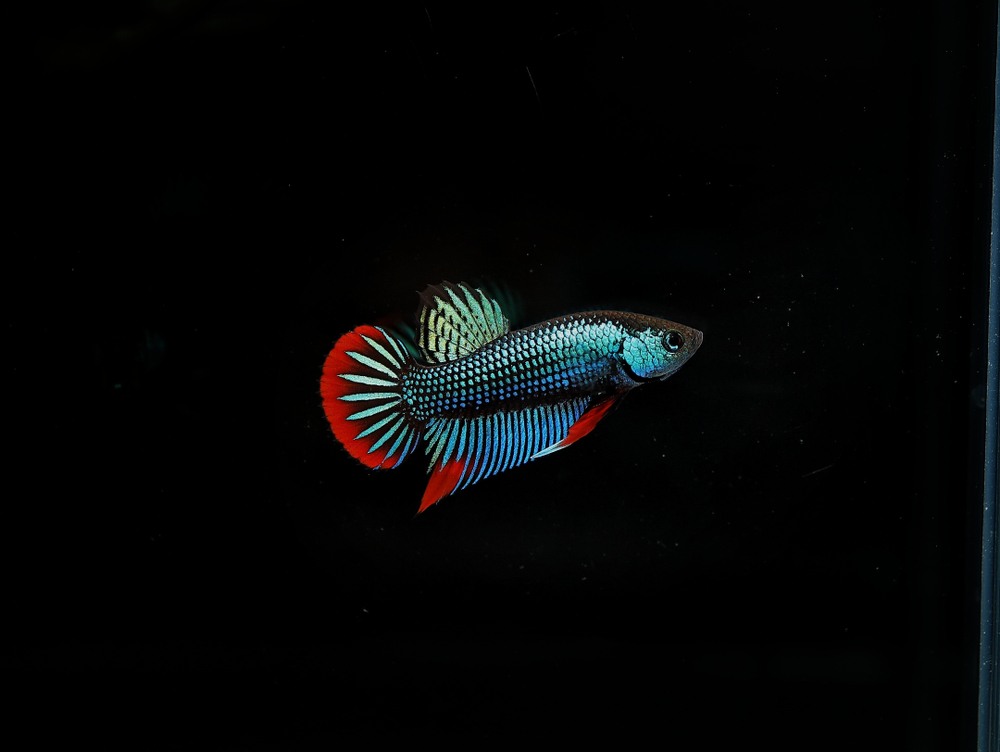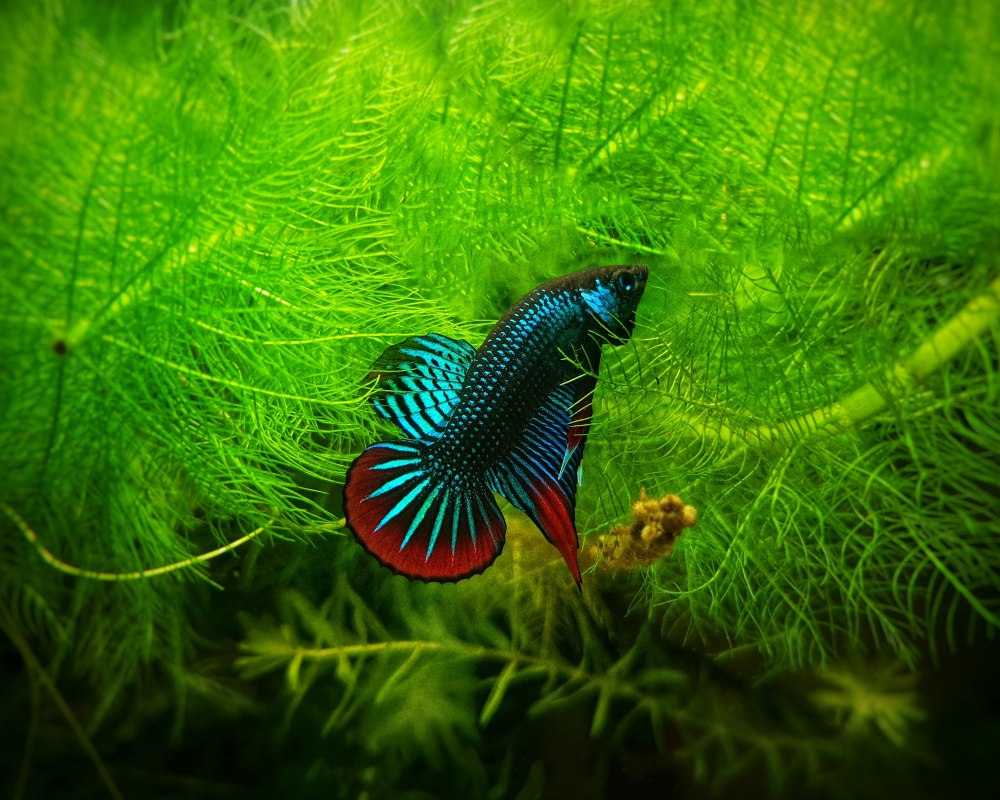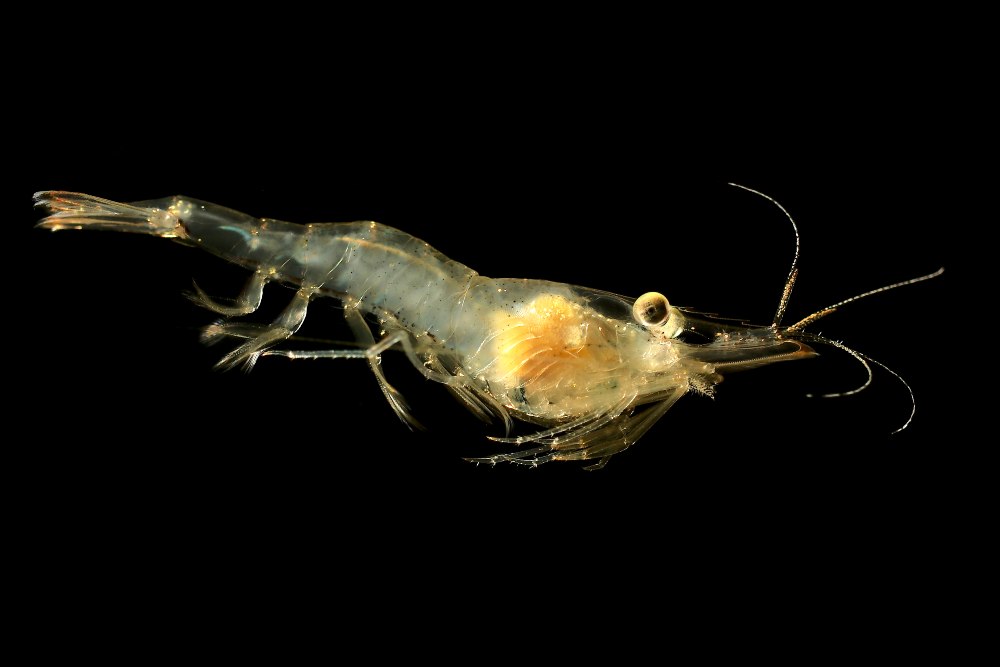The aesthetic and vibrant betta is a labyrinth fish and has been one of the most popular fish choices of experts and novice pet owners alike. Although betta is primarily an aggressive fish, one in particular tends to lead a much more peaceful life.
Betta imbellis is known as the ‘Peaceful Betta’ because of its behavioral differences from other betta fish species. Unlike other betta fish, it can live more happily in a community tank setting. If an appropriate larger tank room is available, you may maintain it in pairs or bigger aquariums.
But what is so special about the peaceful betta imbellis? How can you identify this fish among other bettas? Read on to know all about this beautiful betta fish.
| Peaceful betta overview | |
| Length | 2 inches |
| Appearance | Iridescent blue-green scales |
| Tail and fin shape | Crescent-shaped tail, round and short fins |
Peaceful betta: facts and information

Betta imbellis and its relatives, the betta splendens (better known as siamese fighting fish), exhibit many of the same features. They’re brightly colored and have wonderfully designed fins. Both of them are from Asia’s marshes or tiny and shallow ponds.
The fish are raised in captivity to improve their color, general beauty, and health. They’re both a little bit aggressive as well. There are, nevertheless, several distinctions between these two species.
Perhaps their temperaments are the most critical distinction between betta imbellis and betta splenden. The peaceful betta is softer than many other betta species.
Betta imbellis also has a distinct appearance from betta splendens. Because of its crescent-shape tail fin, betta imbellis are recognized as crescent bettas. Their other fins are equally short and rounded. However, betta splendens have fins that are longer and more.
What does a peaceful betta look like?
Betta imbellis are emerald fish with a circular eclipse on the spine and red-black ventrals. It may become blue with the correct LED light, but it can also turn emerald green under a more bright glow.
Male betta fish are the most attractive, with more expressive fins, colors, and disposition. Females are more camouflaged and have a softer brown hue. Here are some distinct characteristics of their appearance.

Eclipse and tail
The vivid red-colored illumination on the tail is also the source of the name ‘crescent betta.’ This eclipse may produce a nearly perfect crescent or a rounded shape towards the rear.
Scaling
Iridescent blue-green scaling covers the whole body on the upper edge of a brown-black substrate. The sole exception is the top or rear, which has a black hue that serves as concealment for enemies who prey from the top, such as birds.
A black mark runs down the center of the cheeks, covering most of them. Some strains, however, have full-coverage cheeks.
Size
While varieties like betta mahachaiensis may reach 2.5-3 inches in length, a peaceful fish is the lightest of the splendens family, along with betta siamorientalis.
Males may reach a length of 2 inches, while female betta imbellis are usually smaller, seldom exceeding 1.9 inches.
Ventrals
Almost a third of the way down the body, the ventrals are predominantly crimson. The sides are black, with a white section on occasion. Males will shift their ventrals during flaring to attract the attention of females or opponent males.
Betta imbellis is a member of the splendens family that dwells in Malaysia’s shallow waterways, such as rice paddies and marshes as their natural habitat. The water is primarily sour and has a pH of 4 to 7.
How to care for a peaceful betta
Tank setup
For one male, you need a tank with a minimum of five gallons. If you wish to maintain peaceful betta imbellis as a pair, you’ll need a tank that’s at least 15 gallons.
The plants you add to the tank must reach up to the water’s surface to cover the tank. It gives them security, improves the water quality, and benefits the bacterial and biological balance. These are much more vital if you intend on maintaining a couple since females can escape and avoid fighting.
In case you’re unsure about which plants to use, you must note that the plants that do not need a solid light to live are ideal for wild betta fish. Consider java fern, moss, frog bite, and anubias, all floating plants for a well shaded aquarium.
Driftwood is another excellent addition to your aquarium for betta imbellis care. This provides additional protection for your betta fish while also creating a natural environment. This helps prevent illnesses, reduce pH levels, and give your aquarium plenty of shade and shadows, much like in the betta’s natural habitat.
When it comes to filters, it’s all up to you. Use a sponge screen or a moderate flow rate if you opt to use a filter. Betta fish dislike fast-moving water. They function perfectly great in low-tech settings as well, although a filter for your plants is a good touch.
A lid is essential since bettas are excellent jumpers. Therefore, you should use a cover with no holes to keep them from leaping out of the aquarium.
Food
Mosquito larvae, bloodworms, and daphnia are examples of meat-based diets. Some people are selective about traditional dry pellets or flakes, so you’ll have to experiment to see what works best. Feeding your fish with various diets of live and frozen foods can help them get the vitamins and minerals they need.
Live meals are excellent for inducing spawning and fattening them up. If your betta refuses to eat, try providing live items; usually, instinct will kick in, and your fish will begin to eat.
Water specifications
Don’t get too worked up over your water parameters while figuring out betta imbellis care. They can withstand a pH of 6.8 to 7.5. Betta imbellis will thrive as long as the water is pure with no harmful contaminants.
Temperature
You can easily maintain peaceful bettas in a tank with a temperature of 75 to 80 degrees F. You’ll need to have a heater installed in the tank to help you maintain the temperature, as well as a thermometer to monitor it.
How To breed peaceful betta
When it comes to reproducing, this species is quite similar to domestic animals. Keep the following things in your mind well before starting the breeding process:
Selecting your fish
Inbreeding with other wild betta species or domestic Bettas is never a good idea. You should always pair a betta imbellis male with a betta imbellis female. Betta imbellis, as well as hybrids, are becoming more popular.
You may have seen several fish labeled as imbellis hybrids of other species at most pet stores. Unfortunately, this is causing the cherished true wild bettas to dwindle and making it difficult to obtain genuine imbellis. If you wish to breed two fish, make sure they are of the same species.
The mating tank
First, you have to set up a betta fish tank. A 7-12 gallon container will do the work. A low water level is excellent for the betta fry and the male betta imbellis. The female will conceal more quickly, and the male will have to labor less to return the eggs and fry to the nest.
Include as many tall or leafy plants as possible in the breeding tank, as well as catappa leaves. There’s no need for a filter here. The male will create a bubble habitat where the couple will spawn after about a week of cycling.
Preparation
Place the female in a large tank with the male and see each other. Feed live meals up to two weeks ahead of time to prepare them.
You can tell whether your female is fully prepared to spawn after one to three days. Is she striped vertically, has a large tummy, and an obvious egg-spot? Then, it’s time to spawn.
Keep a close eye on the pair when first meeting. If you notice the female and male betta are getting too aggressive, take them away. While the peaceful betta is not as aggressive as betta splendens, you still need to keep a close eye.
Spawning
Always be cautious in the first several hours after release. It’s natural for the male to follow the female for a while, but not if they’re fighting hard. It may take three to four days for them to spawn.
It’s common for a spawn to take many hours, and the female must conceal from the male in the interim, which is why vegetation is essential. Remove the mother immediately after spawning and the father only when the fry swims horizontally.
When caring for the young betta imbellis fry, remember that they are tiny, and finding food small enough for them to consume can be the most significant issue. You can start by feeding them liquid food and then moving on to live food like baby brine shrimp.
Other Peace-loving fish that can share a home with betta imbellis

If you want to keep your Betta imbellis in a tank with other calm fish, ensure they get plenty of places to hide and rest. Even though this fish has a peaceful demeanor, it is still a betta and will lash out if required. This is particularly true if they are about to spawn or protect a bubble nest.
Males betta imbellis are territorial and aggressive, and they don’t like it when their area is small. As a result, you’ll have fewer options for tank mates, so choose wisely when adding fish to your aquarium.
When additional brightly colored fish of comparable size are present, male aggression heightens. Avoid red-colored fish since they have a reputation for being violent among wildlife.
Avoid long-finned species since they might be mistaken for another male fighting fish and get injured or killed. Any little shoaling aquarium fish that isn’t brilliantly colored will get along nicely with your male betta and will be great tank mates.
Female bettas are often less aggressive and territorial than male bettas. This gives them more alternatives when it comes to tank mates.
With females, you don’t have to worry about tank mates’ shades, allowing you to have more vibrantly colored species in the tank with them.
Since females are less territorial and calmer fish, they aren’t as concerned about more fish invading their domain. Therefore, you can have a wider variety of fish in the larger aquariums. This, however, will be decided by each fish’s disposition, as some will be more hostile than others.
Lastly, make sure the fish you choose to live with your betta imbellis must not be known for biting at the fins of other fish.
Some suitable options for tank mates can include neon tetras and African dwarf frogs.
Conclusion
Peaceful bettas are a popular option for both novices and seasoned fish keepers due to their gorgeous colors and calm attitude.
It can live a happy and prosperous life if taken care of properly. This might be the ideal fish for you if you want a betta that is simple to care for yet has a lively personality!
